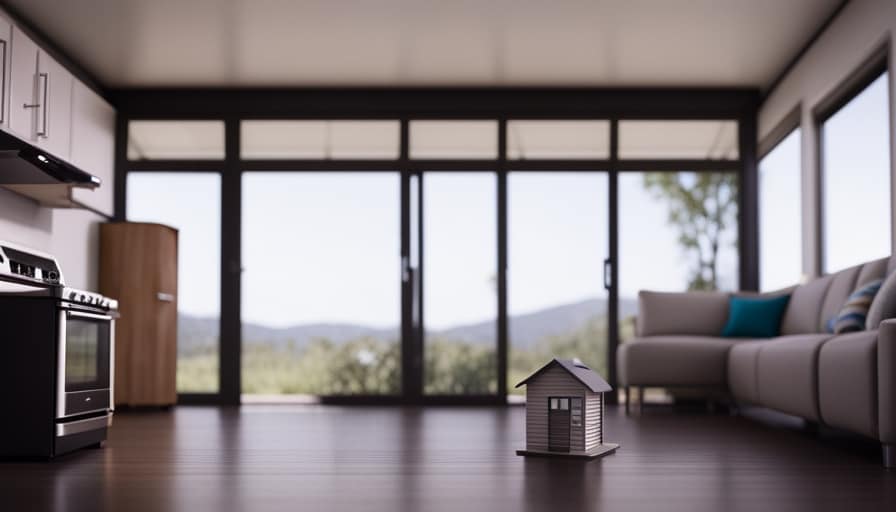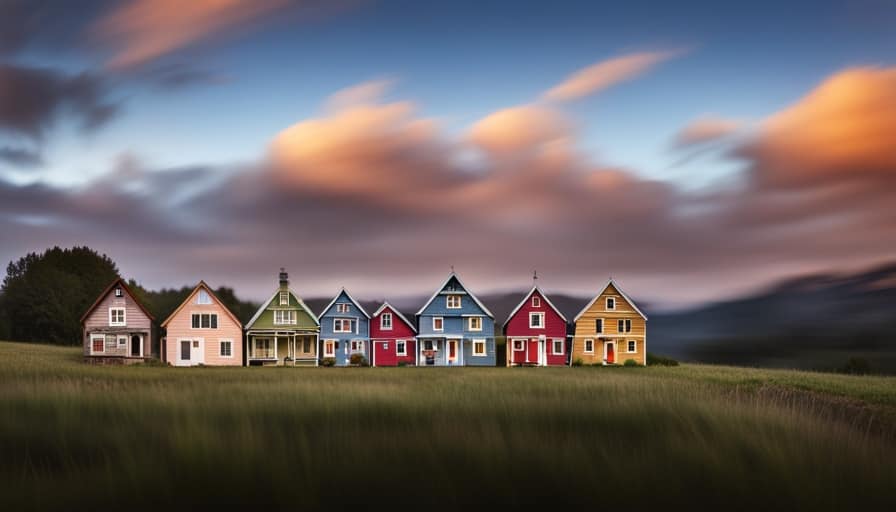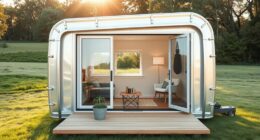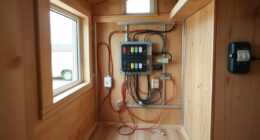By chance, we discovered the key to making a beautiful miniature home: the skill of choosing colors.
As we delved into this captivating realm, we discovered a world of endless possibilities and creative expression.
With our newfound knowledge, we are eager to share the key to unlocking the perfect color palette for your miniature sanctuary.
From assessing the space to considering lighting, we’ll guide you through each step, ensuring that your tiny haven reflects your unique style and purpose.
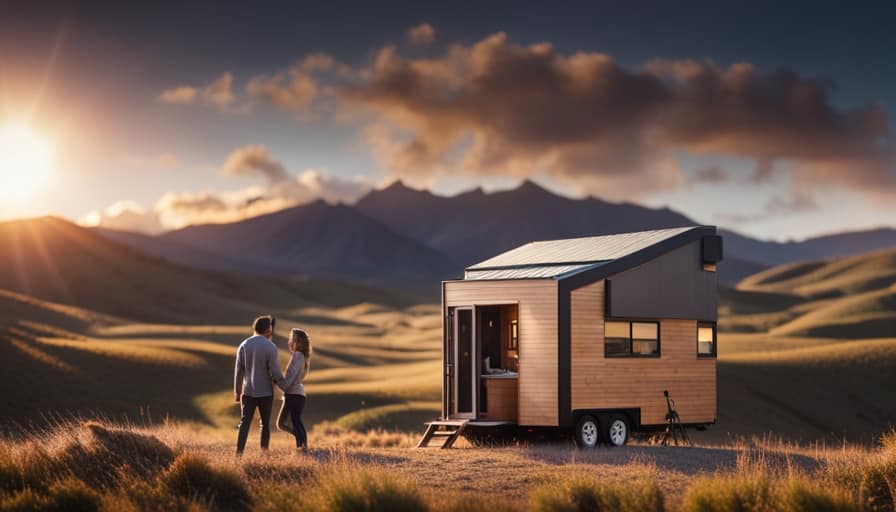
Let’s embark on this colorful journey together.
Key Takeaways
- Examine the size, layout, and functionality of the miniature abode.
- Consider the impact of color psychology and choose shades that align with the desired atmosphere.
- Understand color symbolism in different cultures to align with desired emotions.
- Consider the overall color scheme and select accent colors that complement the dominant colors.
Assessing the Space
We’ll start by examining the size and layout of our miniature abode to determine the best color scheme. Assessing the room layout is crucial in creating a harmonious and visually appealing space. Consider the dimensions, proportions, and functionality of each area.
By understanding the layout, we can strategically choose colors that enhance the room’s purpose and flow. Another essential factor to consider is utilizing natural light. Take note of the windows and the direction they face. Natural light can significantly influence the perception of color, so it’s important to choose shades that complement and maximize the available sunlight.
Assessing the space and utilizing natural light will guide us in selecting the perfect color scheme for our miniature abode, setting the stage for finding inspiration in the next step.
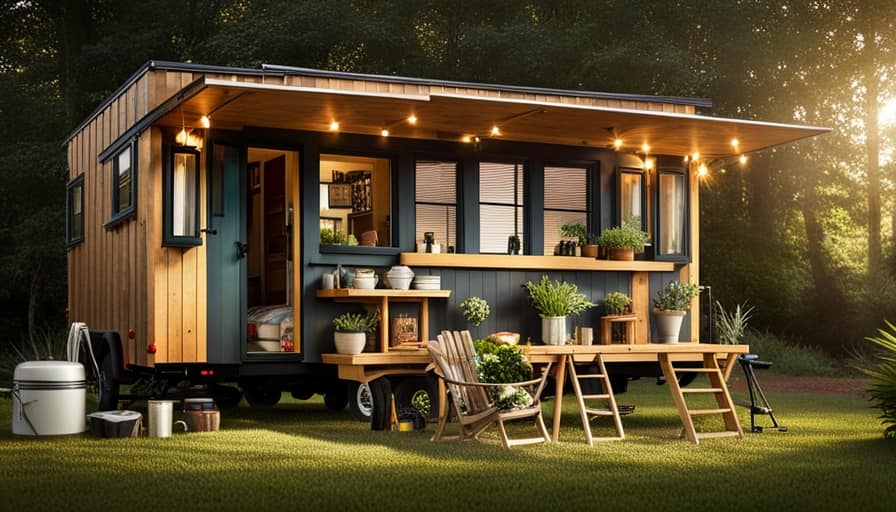
Finding Inspiration
To find inspiration for our color scheme, let’s explore various sources and gather ideas to bring our miniature abode to life. Drawing inspiration from different places can help us create a unique and visually appealing space.
Here are four ways to get started:
-
Look to nature: Take a walk outside and observe the colors found in flowers, trees, and landscapes. Nature offers a beautiful palette of colors that can inspire our miniature abode.
-
Explore color trends: Stay up-to-date with the latest color trends in interior design. Magazines, websites, and social media platforms are great resources for discovering new and exciting color combinations.
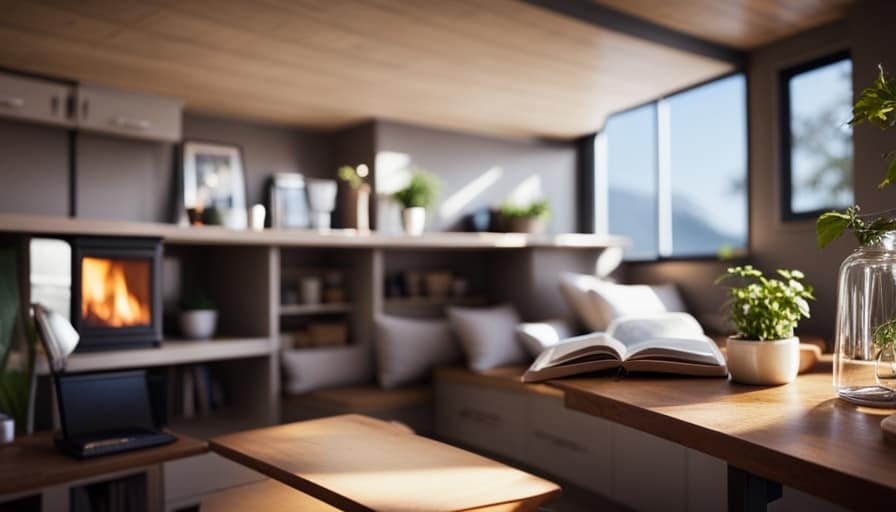
-
Visit art galleries: Art is a great source of inspiration. Explore local galleries or browse online to discover paintings, sculptures, and photographs that speak to you. Pay attention to the color palettes used by artists and consider incorporating them into your miniature abode.
-
Experiment with mood boards: Create a physical or digital mood board to gather colors, textures, and patterns that inspire you. This visual representation will help you see how different elements work together and guide you in selecting the perfect color scheme for your miniature abode.
Choosing a Color Palette
When it comes to choosing a color palette for your miniature abode, there are two key points to consider.
First, harmonizing color combinations can create a cohesive and visually pleasing aesthetic, allowing your small space to feel balanced and inviting.

Second, the impact of color psychology shouldn’t be underestimated – different colors can evoke different emotions and moods, so it’s important to choose shades that align with the desired atmosphere of your miniature world.
Harmonizing Color Combinations
Let’s explore the various color combinations to create a harmonious color palette for your miniature abode.
When it comes to finding complementary colors, the key is to choose hues that are opposite each other on the color wheel. This creates a visually pleasing contrast that brings depth and balance to your space.
Additionally, exploring color schemes such as monochromatic, analogous, and triadic can help you achieve a cohesive look.
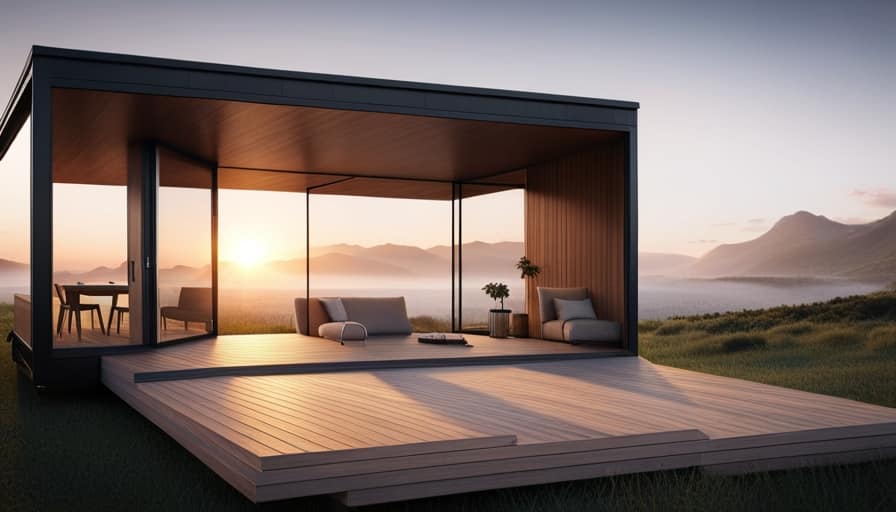
A monochromatic scheme uses different shades of the same color, while an analogous scheme combines colors that are next to each other on the color wheel.
For a bold and vibrant look, a triadic scheme incorporates three colors that are evenly spaced on the color wheel.
By understanding these color combinations, you can create a color palette that will evoke the desired emotions and set the perfect ambiance in your miniature abode.
Now, let’s delve into the impact of color psychology.

Impact of Color Psychology
We can explore the impact of color psychology and choose a color palette that best suits our miniature abode. Color symbolism plays a significant role in our perception and emotions. Each color has its own unique meaning and can evoke different feelings.
For example, blue is often associated with calmness and tranquility, while red represents passion and energy. It’s important to consider the cultural influences as well, as colors can have different meanings across different cultures.
For instance, in Western cultures, white is often associated with purity and weddings, whereas in Eastern cultures, it symbolizes mourning and funerals.
Considering the Room’s Purpose
Our main focus when choosing colors for each room should be considering its purpose. The purpose of a room greatly influences the atmosphere and mood we want to create. Here are four key considerations when selecting colors for different rooms:
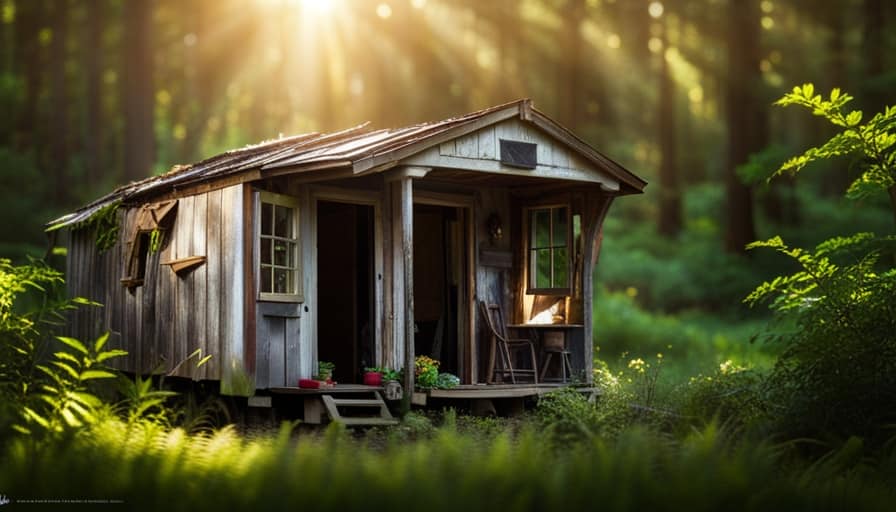
-
Color symbolism in different cultures: Different cultures associate colors with various meanings and emotions. For example, in Western cultures, white is often associated with purity and cleanliness, while in some Eastern cultures, it symbolizes death and mourning. Understanding the cultural significance of colors can help us create a space that aligns with the desired emotions.
-
How to create a calming color scheme: For rooms intended for relaxation, such as bedrooms or meditation spaces, it’s important to choose calming colors. Soft blues, greens, and neutral tones like beige and gray can create a serene and peaceful environment, promoting relaxation and restfulness.
-
Energizing colors for active spaces: In rooms where productivity and energy are important, such as home offices or workout areas, vibrant colors like red, orange, and yellow can stimulate creativity and motivation. These warm colors can promote focus and increase energy levels.
-
Creating an inviting and cozy atmosphere: For gathering spaces like living rooms or dining areas, warm and inviting colors like earthy tones, warm browns, and rich oranges can create a cozy and welcoming atmosphere. These colors can encourage people to feel comfortable, relaxed, and engaged in conversation.

Deciding on a Dominant Color
When it comes to designing our miniature abode, selecting the right colors is crucial. Color psychology plays a significant role in creating the desired atmosphere and influencing our mood.
The dominant color of our space sets the tone and can make a powerful impact on the overall design. By understanding the impact of color choice and harmonizing color schemes, we can create a space that’s visually appealing and evokes the desired emotions.
Color Psychology in Design
One of the most important aspects of color psychology in design is choosing a dominant color that sets the mood and tone for your miniature abode. The color you choose will have a significant impact on the overall atmosphere and ambiance of your space. Here are four key points to consider when deciding on a dominant color:
-
Cultural influences on color perception: Different cultures associate different meanings with colors. For example, in Western cultures, blue is often associated with calmness and tranquility, while in Eastern cultures, it symbolizes spirituality and wisdom. Consider the cultural context and the message you want to convey with your chosen color.
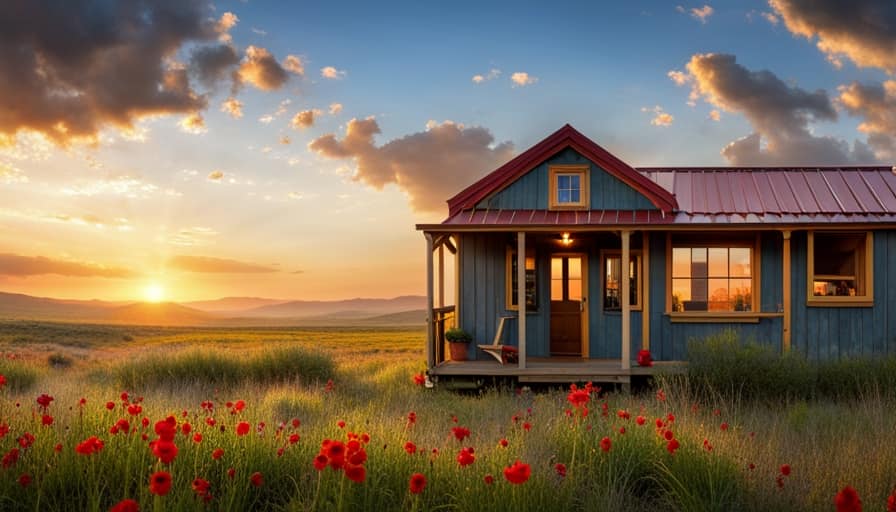
-
Effect of color on mood and emotions: Colors have the power to evoke specific emotions. Warm colors like red and yellow can create a sense of energy and excitement, while cool colors like blue and green can promote relaxation and serenity. Think about the mood you want to create in your miniature abode and choose a color accordingly.
-
Personal preferences: Your personal taste and preferences should also play a role in selecting a dominant color. Choose a color that resonates with you and makes you feel comfortable and happy in your space.
-
Complementary colors: Consider the other colors in your design and how they’ll interact with your dominant color. Complementary colors can create a harmonious and balanced look, while contrasting colors can add visual interest and excitement.
Impact of Color Choice
We can determine the impact of color choice by carefully selecting a dominant color that sets the desired mood and atmosphere for our miniature abode. Color symbolism plays a crucial role in understanding the emotions and meanings associated with different colors.
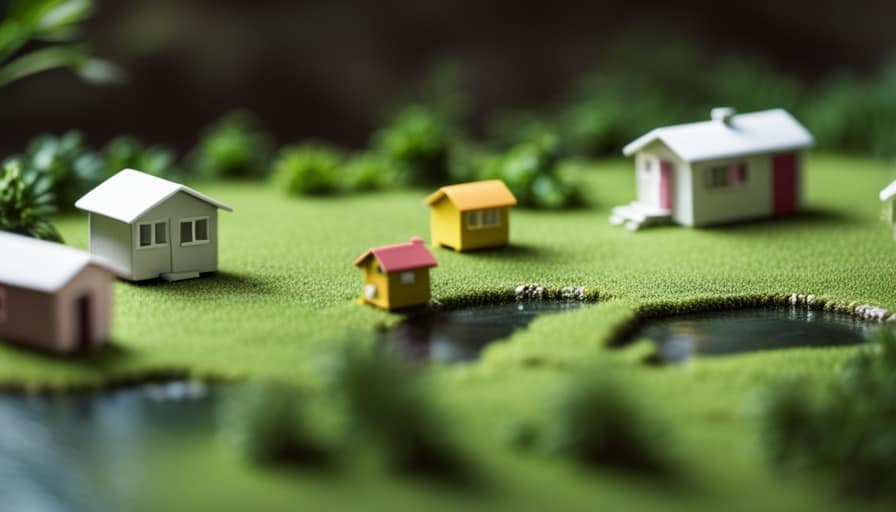
By considering color trends, we can stay in touch with current preferences and create a space that feels modern and inviting. The dominant color will be the foundation upon which we build the rest of the color scheme.
For example, if we choose a calming shade of blue as our dominant color, we can complement it with accents in lighter or darker shades of blue, or even contrasting colors like yellow or orange for a pop of energy. The key is to strike a balance that harmonizes the space and creates a cohesive look.
Harmonizing Color Schemes
To achieve a harmonious color scheme, let’s begin by deciding on a dominant color that will set the tone for our miniature abode. The dominant color will act as the foundation upon which we can build our color palette, creating a sense of cohesion and unity.
When selecting a dominant color, it’s essential to consider color symbolism and current color trends. Here are four key factors to consider:
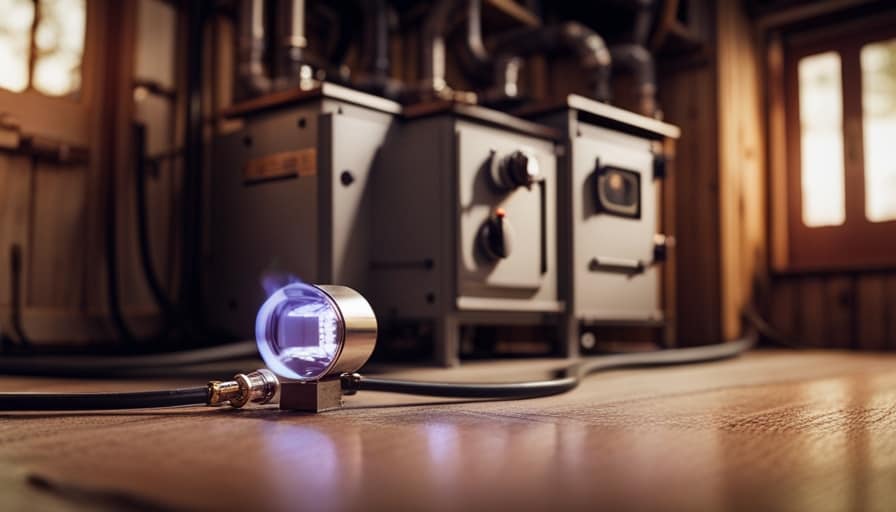
-
Emotional impact: Different colors evoke different emotions. Consider the mood you want to create in your miniature abode and choose a dominant color that aligns with that feeling.
-
Complementary colors: Look for colors that harmonize well with your dominant color. Complementary colors can be found on the opposite side of the color wheel and can add depth and interest to your color scheme.
-
Color psychology: Each color has its own symbolic meaning. For example, blue can evoke feelings of calmness and serenity, while red can be associated with passion and energy. Consider the symbolic meaning of your dominant color and how it aligns with the overall theme of your miniature abode.
-
Current color trends: Stay up to date with color trends in interior design and incorporate them into your miniature abode. This will ensure that your space feels modern and stylish.

Selecting Accent Colors
As we delve into the topic of selecting accent colors, it’s important to consider the overall color scheme of your miniature abode. Accent colors play a crucial role in enhancing the visual appeal and creating a harmonious atmosphere. When selecting accent colors, it’s essential to refer to color theory and color coordination principles to ensure a cohesive and pleasing result.
Color theory teaches us that accent colors should complement the dominant colors in your miniature abode. They should add depth and visual interest without overpowering the primary color scheme. It’s recommended to choose accent colors that are opposite or adjacent on the color wheel to create a balanced and visually appealing effect.
Color coordination is also important when selecting accent colors. Consider the undertones and shades of the dominant colors in your space. Aim for a palette that harmonizes well and creates a sense of unity. Experiment with different combinations and shades to find the perfect accent colors that elevate the overall aesthetic of your miniature abode.
Considering Lighting
Taking into account the importance of lighting, it’s crucial to consider the effect it has on the colors in your miniature abode. Lighting can dramatically alter the appearance of colors, so it’s essential to choose wisely.
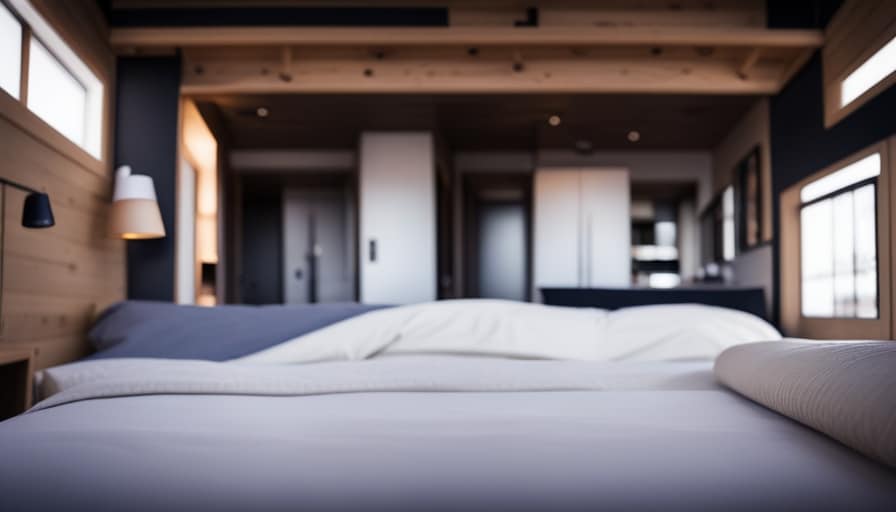
Here are four key factors to consider when it comes to lighting in your miniature space:
-
Natural Lighting: Natural light can bring out the true vibrancy of colors. Consider placing your miniatures near windows or using translucent curtains to allow the sunlight to filter in.
-
Artificial Lighting: Artificial lighting plays a significant role in setting the mood of your miniature abode. Experiment with different types of bulbs, such as warm or cool-toned lights, to create the desired ambiance.
-
Direction of Light: The direction of light can affect how colors are perceived. Observe how shadows and highlights fall on your miniatures, and adjust the color palette accordingly.

-
Lighting Fixtures: The style and design of lighting fixtures can enhance the overall aesthetic of your miniature abode. Choose fixtures that complement the color scheme and theme of your space.
Testing Colors
We can try out different colors on a small section of the wall to see how they look in our miniature abode. Testing color swatches is a great way to experiment with color combinations and find the perfect palette for our space.
When selecting color swatches, it’s important to consider the overall style and theme of our miniature abode. If we desire a cozy and inviting atmosphere, warm tones like earthy browns and soft yellows may be ideal. On the other hand, if we want to create a modern and vibrant space, bold and bright colors like electric blue or vibrant red can be considered.
Frequently Asked Questions
Can I Use Bold and Vibrant Colors in a Small Space, or Should I Stick to More Neutral Tones?
We can definitely use bold and vibrant colors in a small space! It adds personality and liveliness. However, incorporating metallic accents can help create balance and prevent the room from feeling overwhelmed.

How Can I Incorporate Multiple Colors in a Room Without It Appearing Too Overwhelming or Chaotic?
To create a cohesive color palette for our miniature abode, we can creatively incorporate pops of color without overwhelming the space. By strategically selecting complementary shades and using accents sparingly, we can achieve a balanced and visually appealing room.
What Are Some Tips for Selecting Accent Colors That Complement the Dominant Color in a Room?
When selecting accent colors to complement the dominant color in a room, we recommend starting with a color wheel and choosing hues that are opposite or adjacent to the dominant color. This creates a harmonious and cohesive color scheme for your miniature abode.
How Can I Determine the Impact of Natural Lighting on the Chosen Colors for My Miniature Abode?
Determining the impact of natural lighting on colors in our miniature abode is crucial. By analyzing how artificial lighting affects color selection, we can create a space that maximizes psychological impact and creates a cozy atmosphere.
Are There Any Specific Techniques or Tools I Can Use to Test How Different Colors Will Look in My Miniature Space Before Committing to a Final Decision?
There are a few techniques and tools we can use to test how different colors will look in our miniature space before making a final decision. Color swatch comparison and virtual room design tools are great options for visualizing the outcome.
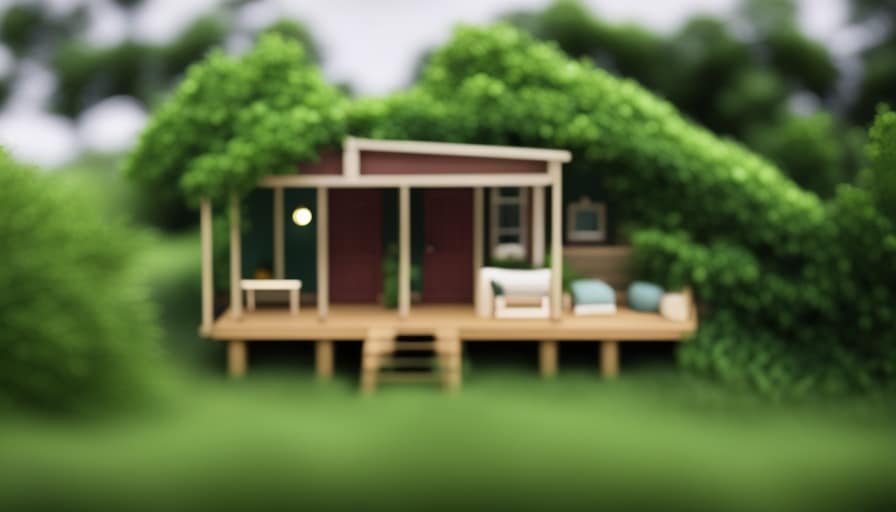
Conclusion
In conclusion, selecting colors for your miniature abode is an art that requires careful assessment, inspiration, and consideration of the space’s purpose.
By deciding on a dominant color and selecting accent colors that complement it, you can create a harmonious and visually pleasing environment.
Don’t forget to take lighting into account and test colors to ensure they achieve the desired effect.
With these techniques in mind, you’ll unlock the true potential of your miniature abode and create a space that reflects your personal style.
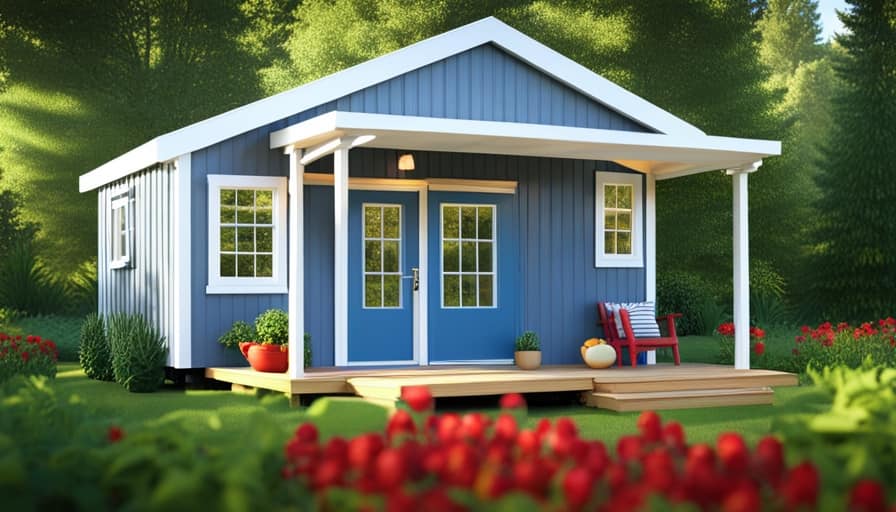
I’m Theodore, and I love tiny houses. In fact, I’m the author of Tiny House 43, a book about tiny houses that are also tree houses. I think they’re magical places where imaginations can run wild and adventures are just waiting to happen.
While tree houses are often associated with childhood, they can be the perfect adult retreat. They offer a cozy space to relax and unwind, surrounded by nature. And since they’re typically built on stilts or raised platforms, they offer stunning views that traditional homes simply can’t match.
If you’re looking for a unique and romantic getaway, a tree house tiny house might just be the perfect option.

